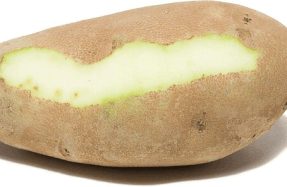Rome’s Greatest Little-Known Pasta

Rome has four iconic—and outrageously good—pasta dishes: cacio e pepe, amatriciana, carbonara, and gricia. I’ve long been a huge fan of the more well-known first three but had never tried gricia, which features guanciale (cured hog jowls), ground black pepper, and tangy, salty Pecorino Romano. So when my colleague Sasha Marx, who grew up in Rome, offered to make it for lunch on a quiet day in the test kitchen, I couldn’t refuse.
Sasha put a pot of rigatoni on to boil while he sautéed chopped guanciale in, or “to the nail”), along with a lot of pasta water—roughly 2 cups. As he let the rigatoni simmer until it was al dente, he stirred it with the starchy water and pork fat to form a creamy sauce, a technique known as . Finally, he returned the browned guanciale to the mix, along with a few more splashes of pasta water, lots of pepper, and grated Pecorino.
You’re reading a preview, subscribe to read more.
Start your free 30 days





